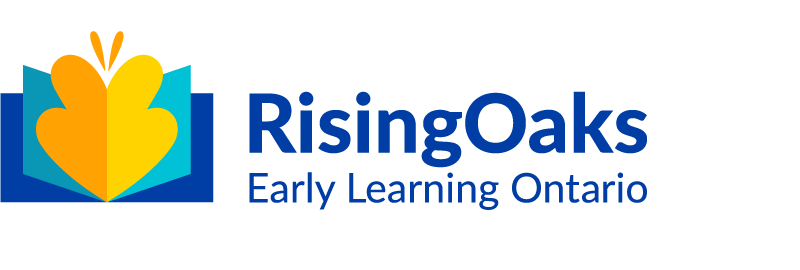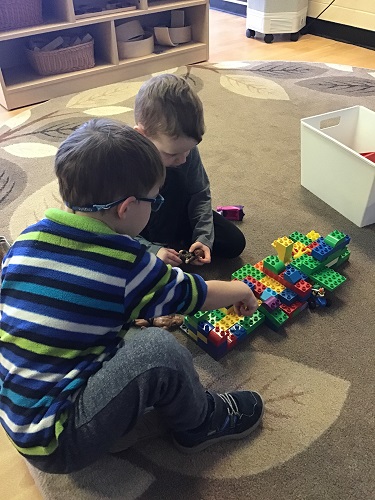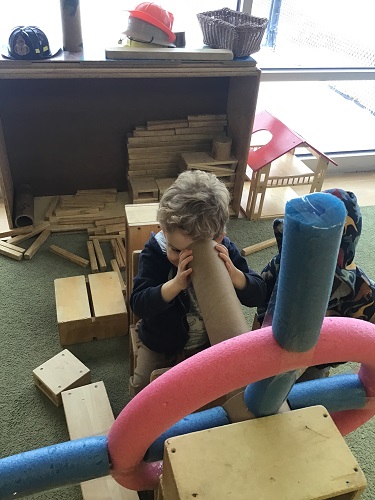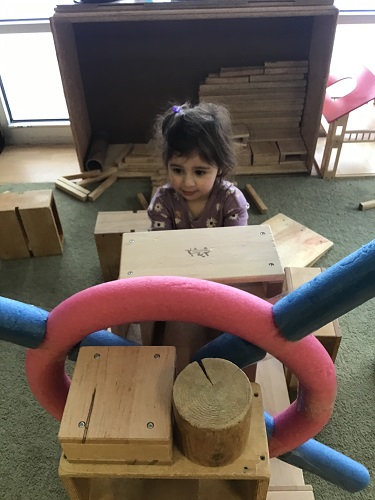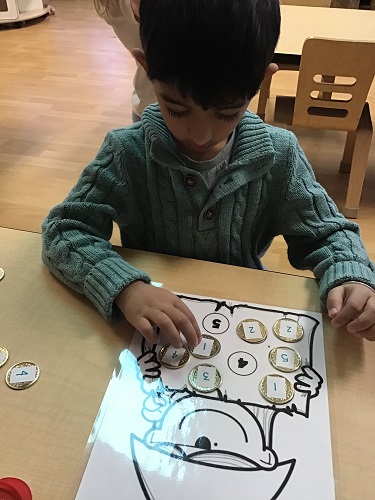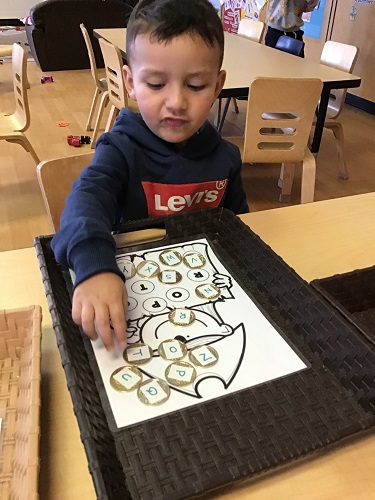The preschoolers have continued their interest in pirate ships this month. To reignite this interest after the holidays, Luke and Grayson teamed up to construct a pirate ship out of Lego bricks. They reminisced about the previous pirate ship they had built with their peers using chairs and the pirate flag that the preschool children created. Luke recalled, “Yeah, we made that a long time ago.” As they examined their Lego creation, Grayson inquired about the ship's driver and steering wheel. Luke clarified that the steering wheel is for cars, while pirate ships have a different kind of wheel.
Listening in, Nancy suggested they use the iPad to look up the correct term for a pirate ship's steering wheel. After a quick search, the children and the educators learned that while it's called a steering wheel in cars, on ships it's actually referred to as “the helm”, which is essential for steering the vessel. The term "helm" originates from an Old English word meaning "rudder," the mechanism that directs the boat. The children misheard it as "ham," to which Nancy chuckled with them, saying, “No, not ham that you eat, its helm. Let me show you some pictures.” As Nancy displayed images of the helm, the children brainstormed ideas for creating one for their ship, hinting at a deeper exploration into pirate ships and their terminology.
To foster the children's enthusiasm for pirate ships, the educators constructed a ship's helm using pool noodles the following day. The children expressed their excitement upon seeing the wheel. "We are going to keep it forever," exclaimed Luke. They quickly began assembling a pirate ship with large wooden blocks. This activity required effective communication, collaboration, and planning as the children discussed the ship's components, the arrangement of each block, and the placement of the helm. "This is going to be the biggest pirate ship yet," declared Jaime to his classmates. When Audrey found her place on the ship, Jaime added extra seats to accommodate more friends. He then counted the seats, stating, "Now we can have 1, 2, 3, 4 friends in the ship."
Once the ship was complete, the preschoolers waited patiently and took turns steering. Liam politely requested, "Now I want my turn please," to which Luke responded, "Okay, Liam." When Grayson took the captain's seat, he shouted, "Arrr Mateys! We are sailing to the island." Wesley demonstrated creativity by using the cardboard tube as binoculars to determine the direction for steering the boat. "I am going to that island over there," he explained. The children interacted with respect, and the educators observed how they embraced each other's ideas and adjusted their behaviors to consider their peers' perspectives.
The educators then continued to use this interest in pirate ships to enhance the children’s literacy and numeracy skills. Pirate maps focusing on number and letter recognition was created and placed on the table. Gold coins with various numbers and letters on them were incorporated with the maps and the children had to match the coins to the corresponding spots on the pirate map. Some of the children also recognized letters from their own names while making these connections.
We wondered if adding some sand to hide the gold coins, making it a fun pirate challenge for the children to discover them hidden within the sandy treasure, would be a new way to expand on this interest in the following weeks.
